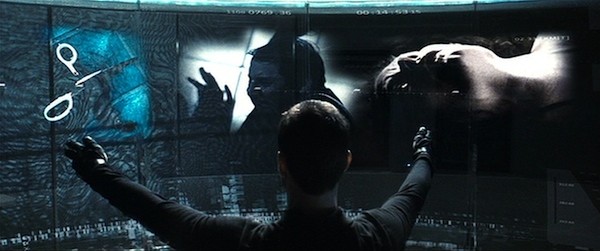Tom Cruise standing in the middle of a dimmed office orchestrating a floating wall of images, graphs, and surveillance footages. This is perhaps one of the most prominent images people take home after watching Minority Report (Steven Spielberg, 2002). Loosely based on the same-titled short story written by Philip K. Dick, Minority Report is a sci-fi action film gem-packed with ‘futuristic’ technologies in the year 2054. Pre-crime, which also appears as the name of the specialized police department in the film, is a coined term by the author Philip K. Dick.
In Dick’s story, he described Pre-crime as a system that is designed to intervene, punish or restrict the potential criminal activities before such motifs are carried out and lead to harmful consequences. While it initially was merely a conceptual instrument in Dick’s 1956 sci-fi story, such idea of introducing preventive criminal justice system has been studied to various extents in real life. Mainly advocated by the positivist school of criminology, academia and the practitioners alike focused on the potential roles of a system like Pre-crime in the biological, psychological and sociological profiling (Zedner, 2007;2009;2010;2014).
Most notable examples can be found in the actual developments of crime prediction software. Developed by a professor from the University of Pennsylvania, a crime prediction software program had a trial run in Washington D.C. in order to test the applicability to a nation-wide operation (Economic Times, 2010). IBM’s Crime Reduction Utilizing Statistical History (CRUSH) can be another example. Based on mining years’ worth data of incident reports and law enforcement data, the predictive analytics of IBM’s CRUSH is already yielding positive results (Carr, 2010).
It almost sounds too fantastic: crises averted, lives saved, crimes solved before even happening… but at what cost? While some might argue the operations of CRUSH and the likes are too conservative or too ‘reserved’, there is a good reason such ubiquitous application must be hindered – just yet at least. For Minority Report’s level of application to be possible, a total surveillance must be preceded. Not a corner will be allowed for the individuality and personal privacy – No dead angle, not even in your mind.
No one knows what kind of changes GDPR will go through during the coming 25 years. However, I don’t think that kind of deep infringements of personal privacy and data privacy will be tolerated in the course of the changes in coming years. What do you think? Are you ready to welcome the brave new world of pre-crime in 2045?

• Zedner, Lucia (2014), “Preventive Detention of the Dangerous”. In: Andrew Ashworth/Luica Zedner/Patrick Tomlin (eds.) Prevention and the limits of the Criminal Law. Oxford University Press, 144-170.
• Zedner, Lucia (2010), “Pre-Crime and pre-punishment: a health warning”. In: Criminal Justice Matters, 81: 1, 24–25.
• Zedner, Lucia (2009), Security. London, 72 ff.
• Zedner, Lucia (2007), “Pre-crime and post-criminology?”. In: Theoretical Criminology, vol. 11, no. 2, 261–281.
• “‘Minority Report’ moves from reel into real life”. The Economic Times. August 27, 2010. Archived from the original on August 31, 2010. Retrieved December 12, 2010.
• Carr, Austin (July 30, 2010). “7 Ways Real-Life Crime Fighting Mirrors “Minority Report””. Fast Company. Retrieved December 10, 2010.


I think the ethical aspect of emerging technologies is always extremely interesting. You mention the privacy issues and the surveillance that is needed for this technology. However, using historic data to predict future crimes, can never predict with 100% certainty that someone is going to commit a crime. Hypothetically speaking, if we somehow found a way to predict future crimes, what should we do with this information? Should we, like in the movie, prevent these crimes by arresting the person in question before he has the opportunity to commit one? Or should an observation team be placed on the subject and wait until the crime has been committed? Both ways will have major complications. However when talking about a more realistic scenario, I think that some crime patterns can be detected through data analysis and prediction. For instance, I can imagine that predictive heatmaps can be made which will indicate the probability of certain crimes to happen in certain places of the city. I am curious how we will use data analysis and prediction in the future to tackle criminality.